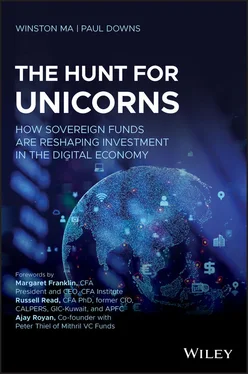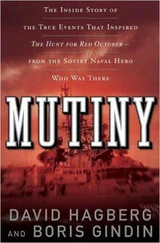Decentralization vs. Centralization. The virus has disrupted the powerful, vital networks that animate modern life, creating an instant preference for technologies that increase local choice and push power to the edge of the network, thus reducing concentrated points of failure. Examples include distributed power generation and storage, efficient micro-factories, portable digital medical devices, and distributed trust applications like Bitcoin. One might think of this as a form of autarky expressed in product design. But there is also an argument to be made for even more centralization; that economies of scale for critical safety and productivity goods cannot be achieved without more, not less, coordination among countries and companies.
In sum, the world must plan for the worst and work, determinedly and deterministically, for the best. Here, past is not prologue. From Singapore to New York, governments and companies are running multiple experiments in real-time. All we know is that it will be a Long Recovery.
We will need to catch up to, and surpass, our former rate of growth. And to do so in a way that brings prosperity to billions of people. This will be impossible without a tsunami of technology-driven transformation, of entire industries and of the infrastructure needed to sustain them. Never have the protagonists described in this book had a more important mission, for the coming decade will become a live experiment in “super-productivity” that they are uniquely suited to foresee, finance, and prosecute.
The time has come to build the greatest of Time Machines.
Ajay Royan
Ajay Royan cofounded and runs Mithril, a family of long-term investment funds for transformative and durable technology companies. Together with cofounder Peter Thiel, Ajay invests Mithril's funds in companies that encompass, among other areas, cybersecurity, nuclear energy, next generation finance, medical robotics, industrial automation, advanced antibody discovery, metabolic disease therapies, and specialized data integration, visualization, and analysis .
The Investment Partners of Choice
‘Well, now that we have seen each other,’ said the unicorn, ‘if you'll believe in me, I'll believe in you.'”
– Lewis Carroll; Through the Looking Glass
This timely and important book by Winston Ma and Paul Downs turns a long-standing prevailing orthodoxy entirely on its head, and for good reasons! Not so long ago, particularly prior to the onset of the Global Financial Crisis of 2008-2009, the most sophisticated and successful pools of institutional capital were managed by pension funds, insurance companies, and university endowments largely in OECD countries which allocated their capital to investment fund managers in stocks, bonds, and to some degree also in the private markets for real estate and private equity.
Large scale was viewed largely as an impediment for achieving investment success because smaller funds were viewed as more nimble and less likely to move a market while it was securing disproportionate benefits (e.g., by investing in small cap stocks). Sovereign investment funds were few in number, lightly staffed, and seemingly one step behind their more adventurous institutional fund peers.
Today, the impact of these same sovereign funds cannot be understated both in terms of their impact on the global investment markets and economic development but also on modern life generally. Indeed, the significant changes we are seeing worldwide in ride-sharing versus taxis, away from motor-fueled cars and towards electric ones, and towards sharing office and home spaces can all be attributed in large measure to the actions of these sovereign investors. Rather than being rogue actors, which was greatly feared prior to 2008-2009, these sovereign investors have become a stabilizing force in the global capital markets for stocks and bonds because of their long investment time horizons and acceptance of long-term risk.
Moreover, rather than large scale being a disadvantage, these sovereign funds have also demonstrated that large size can become an advantage in terms of their ability to access new opportunities and their heightened credibility among project managers around the world who increasingly view them as the Investment Partners of Choice for international investing.
It is this now firmly established role as the Investment Partners of Choice for international investing that will enable the sovereign funds to have a disproportionately strong impact on modern life for many decades to come. Ma and Downs’ clear and expansive insights into these disproportionately important and yet little-known institutions will prove critical both to practitioners in the field of investing as well as to the general public seeking answers to the big picture questions of why the new unicorns transforming their lives arose from the modern financial system.
Russell Read, CFA, Ph.D., London
Russell Read, CFA, Ph.D. is the former Chief Investment Officer for the California Public Employees' Retirement System (CalPERS), the Gulf Investment Corporation (GIC-Kuwait), and the Alaska Permanent Fund Corporation (APFC)
Into the Vanguard of the Digital Transformation
Sometimes a book sheds light on a little known but powerful force. Sometimes it is timely because it catches the world at an inflection point. Rarely does a book accomplish both.
With the arrival of Sovereign Investment Funds: The Hunt for Tech Unicorns from Winston Ma and Paul Downs, we have that rare beast: a book that, against the backdrop of the world-altering coronavirus epidemic, provides a thoughtful guide to the role sovereign investors play in the world-changing digital transformation – and how one accelerates the other. The authors capture in a fast-paced, engaging format the way in which the world's largest pools of capital have again come to the fore, both as economic superheroes of the developing world and the comic-book villains of the developed markets.
Sovereign investors have gone from strength to strength as they navigated the first Gulf War, the Global Financial Crisis, and now the coronavirus pandemic. It is no wonder that they have been called upon in times of crisis. The resources at their command are staggering: $30 trillion, which may be on the conservative end. Simple, mechanical portfolio rebalancing at one of the larger funds can alter the course of the world's currency markets. Norway's fund holds, on average, 1.5 percent of every listed company on earth. And as they pivot from Wall Street to rescue their home economies, the resultant departure and arrival of their cash hoards will surely be felt as much in the corridors of investment banks as in their home governments' budgets and stimulus packages.
Meanwhile, the advent of stay-at-home orders and social distancing have only accelerated the trend toward the digitalization of everything. This digital transformation has been driven increasingly by massive pools of sovereign capital. Tracing the dramatic rise and recent fall of some unicorns – private companies with valuations of more than $1 billion — the book reveals in case studies how the Sovereign Investment Funds of its title have fueled the rise of this once-rare breed, backing the likes of Alibaba, AirBnb, JD.com, Tesla, Uber, WeWork, and the well-known unicorn-maker, the Softbank Vision Fund. And similarly, how they are themselves integrating AI and blockchain into their own operations – and into their thinking about mitigating digital disruption to their portfolios.
The book profiles a diverse cast of characters from the Middle East to Canada, from Southeast Asia to Africa, from Europe to Australia and from Latin America to East Asia as they invest in the digital transformation and are they themselves digitally transformed. The focus moves on from the tech hubs of Silicon Valley and Beijing to capture emerging hubs in India, Europe and the Middle East as well as Africa, a continent now entering the digital economy.
Читать дальше












